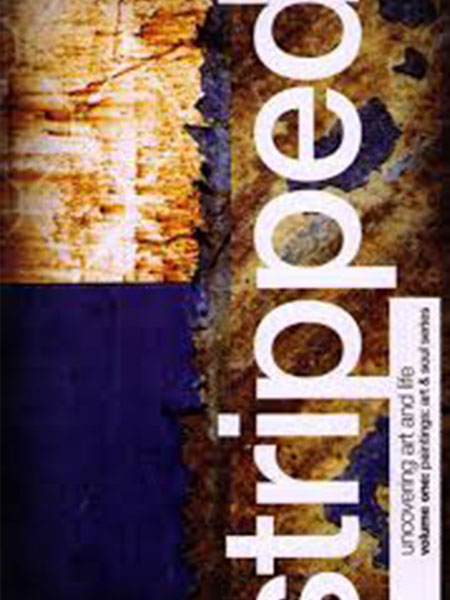Stripped: Uncovering Art and Life
by Tanya Walker
Stripped: Uncovering Art and Life is a group study guide that manages to create a safe and yet interesting place for students in college ministries to gather and share their feelings and ideas about life and the world. In our current post-modern culture, creating a safe place for students to share and explore is key to helping students engage in your group. If for one moment they believe that they have been gathered to have their thoughts and beliefs corrected by people who “know better” they will immediately check out and never come back. But, if they believe that their unique perspectives and conclusions are valued then they will be open to hearing other perspectives as well and potentially (with the Holy Spirit moving) decide that God’s truth is worthy of being followed.
How does this study pull this off? Through the medium of art, that is how.
“Art demands a viewer. It has the power to take one artist’s journey and create a larger dialogue in which all can engage. By its very nature art uncovers and makes visible the unconscious, the hidden, the taboo, the mundane. Art asks us to examine closely the things we pass by in a new light, to wrestle with ideas that disturb us, and to rethink our conclusions about the world.” – Stripped
Concepts like isolation, reconciliation, meaning, value, truth, and God are all tackled by centering the conversation on the great artists and masterpieces of the western world: The Scream by Munch, Mona Lisa by Da Vinci, Return of the Prodigal Son by Rembrandt, among other works. The paintings bring to the surface the universal cries of the human heart and ultimately lead the discussion to our need for a Savior.
The study, which is designed to include a mix of believers and non-believers, is divided into 6 sessions, each exploring a different issue raised by the painter’s work:
The session starts with a look at a new work of art and then engages in a three part discussion:
Engage
This part uncovers your emotions, thoughts, and experiences, all of which inform how you view life, God, and your spiritual journey. Included in this section are ways to continue your exploration of a painting’s theme through other media: film, literature, non-fiction writings, other paintings, and passages from the Bible. Here you’ll find additional company for your journey – others who have wrestled with these questions and whose work reflects various roads taken.
Uncover
This part pulls back the veil on the artist, the spiritual and cultural issues which the painting addresses, and poses some questions about the content.
Create
This part provides an outlet for kinesthetic natures who need to “do” in order to engage. The ideas included are limited only by your imagination.
To see a sample of the booklet and its format just click here: Stripped Sample Booklet
The full booklet can be ordered at CruPress.com for $11.50. Generally, it is recommended that everyone in the group have a copy.
Using this in Your Ministry
Use this material to launch a movement to reach artists! It is perfectly contextualized to them and is perfectly suited to help them overcome the many obstacles that prevent post-modern artists from finding their way to the Gospel’s absolute truth. Although many college students are open to sharing their view on life and the world (given the right environment), this study is still best suited for artists only.
This study consistently appeals to the creative mind and thought process, asking questions like “what color represents isolation,” or “how does isolation and disconnectedness spur on or hinder your creative work.” To an artist, this is like offering them a cold glass of water on a hot day, absolutely refreshing. But to a non-artist it is like splashing that same glass of water in his face. It may feel nice eventually, after he gets used to it, but at first it will feel too unsettling and uncomfortable. There are a TON of materials that are great for your typical mainstream college student. But there are a very few other materials specifically designed for capturing the attention of the artists on your campus. Use this material well!
TIP: A well-prepared facilitator is absolutely key for this group. You need to be willing and able to cultivate the safe environment needed by being open to lots of opinions and perspectives being shared, without judgment, by you or the other believers in the group. You also need to be willing to go on the same journey, through exploring these works of art, as everyone else in the group.
It is highly recommended that you carefully review this Facilitator’s Guide, in addition to the Facilitator’s notes at the end of the booklet. It gives great guidance on cultivating the right environment for this group’s success.




